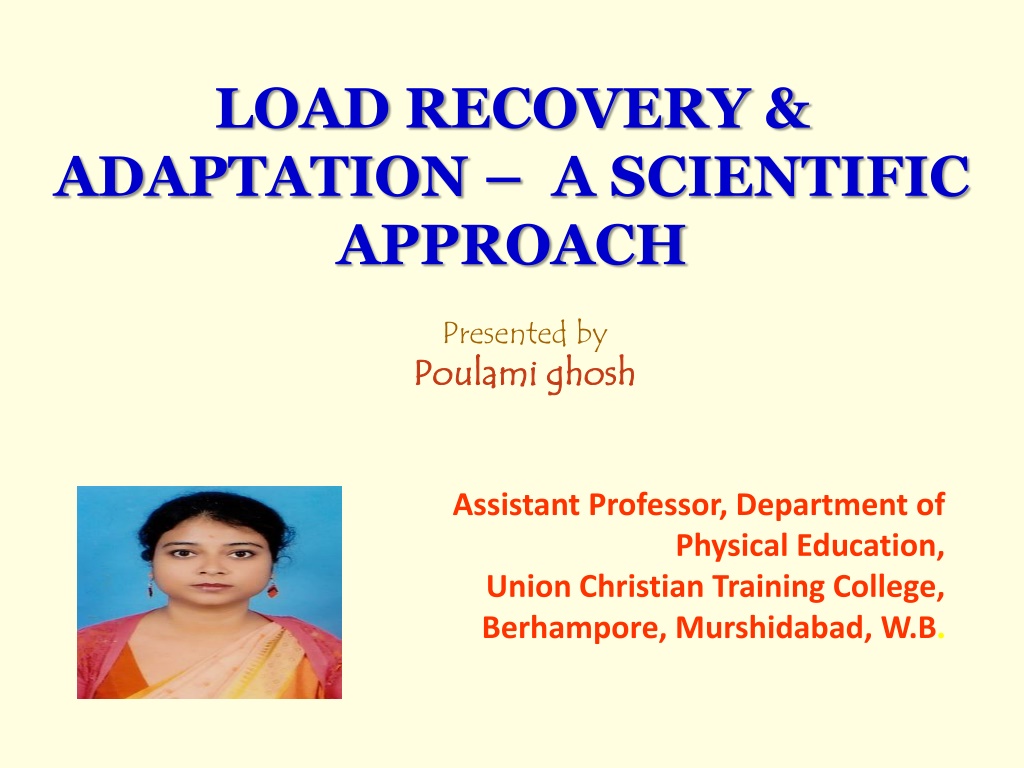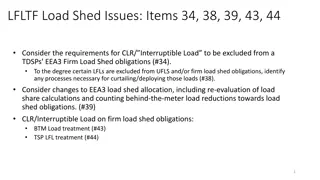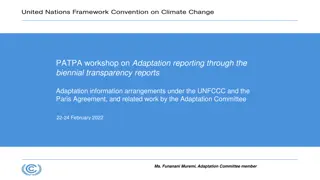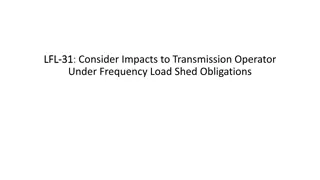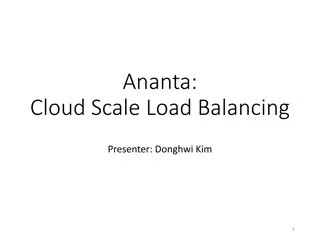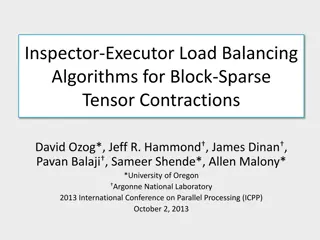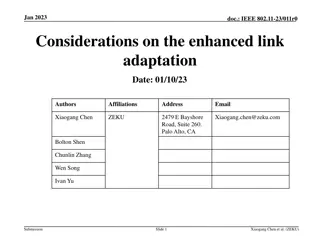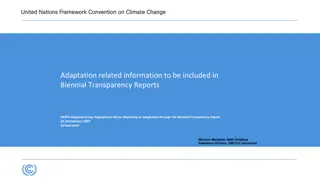Load, Recovery, and Adaptation in Training
Load, recovery, and adaptation in training are crucial for improving performance. Training load indicates the intensity of a session and the required recovery time. Fatigue is a common outcome of intense exercise, impacting performance. Energy supply and factors like phosphocreatine availability influence fatigue during activities like sprinting. Proper recovery is essential for restoring ATP and PC stores post-exercise, with factors like muscle fiber type affecting resynthesis rates.
Download Presentation

Please find below an Image/Link to download the presentation.
The content on the website is provided AS IS for your information and personal use only. It may not be sold, licensed, or shared on other websites without obtaining consent from the author.If you encounter any issues during the download, it is possible that the publisher has removed the file from their server.
You are allowed to download the files provided on this website for personal or commercial use, subject to the condition that they are used lawfully. All files are the property of their respective owners.
The content on the website is provided AS IS for your information and personal use only. It may not be sold, licensed, or shared on other websites without obtaining consent from the author.
E N D
Presentation Transcript
LOAD RECOVERY & ADAPTATION A SCIENTIFIC APPROACH Presented by Poulami ghosh Poulami ghosh Assistant Professor, Department of Physical Education, Union Christian Training College, Berhampore, Murshidabad, W.B.
Load Training load feature tells us how hard the training session had been and how much time we will need to recover fully from it before further training. Training load is psychological and physiological demand put on the organism through motor stimulus resulting the improvement and maintenance of performance capacity.
load load Motor stimulus Homeostasis Homeostasis condition condition Physical Physical movement for tackling the disturbance movement for tackling the disturbance State of High State of High fatigue fatigue [Essential condition for starting adaptation] Deteriorate Deteriorate the performance capacity the performance capacity Recovery phase of super compensation phase of super compensation Proportionate load and recovery adaptation adaptation
Fatigue Inability to maintain a given or expected force or power output and is an inevitable feature of maximal exercise. Actually fatigue is a state of discomfort and decreased efficiency resulting from prolonged and excessive exertion.
Energy supply and cause of fatigue in sprinting event The causes of fatigue in sprinting are multifactorial but the decline in phosphocreatine availability is the most important factor. AtP-Pc system is the source of energy supply in sprinting. myosinATPase ATP ADP + Pi + energy kinase PC Pi + C + energy ATP Gradual decline in anaerobic ATP production on an increase in ADP accumulation, caused by a depletion of PC and fall in the rate of ATP resynthesis. Hydrogen ion accumulation may contribute to the fatigue process. High intensity exercise depends upon pH level. But the initial force generation during the first few seconds of activity is more related to PC availability but here the rate of PC (water soluble muscle protein) depletion is more so the level of pH decrease and fatigue arise.
Recovery from Sprinting Recovery of the ATP and PC store occurs within a few minutes. But resynthesis depending on the type of exercise performed, duration and repetition. The resynthesis of PC during recovery from exercise depend on the cellular concentrations of ATP, Cr, O2, level of pH etc. Sprinting even demands and depends upon more effectively on type II muscle fibre. But the rate of phosphocriatinine is lower in Type II fibre.
Nutrition for sprinting High protein diet are common (for powerful muscle and generate more power) Creatine supplementation is also especially popular with sprinters Performance in sprints is less affected by the pre exercise diet. In training session also needed carbohydrate for muscle glycogen and protein for creatine
Adaptation for speed increase muscle mass increase power generating capacity due to greater muscle mass muscle hypertrophy (type II) no change in the concentration of ATP/ PC and other chemical composition increase the ability of CNS
Energy supply in middle intensive event Muscle glycogen Glucose [C6H12O6] energy Pyruvic Acid [CH3-CO-COOH] insufficient O2 Lactic Acid [CH3CH(OH)COOH] Again, energy + 3ADP + Pi 3ATP
cause of fatigue in middle intensive event The pH in resting muscle is about 7.0 and can fall to 6.3 during high intensity exercise. ATP is the direct source of energy for used for the immediate resynthesis of ATP. Intramuscular depletion of these phosphogen results in fatigue. increase the storage of lactic acid in our muscle. It has on intracellular concentration of H+ ion with increase in accumulation of lactic acid leads to increase in H+ which decreasing the amount of Ca++ that released from sarcoplasmic reticulium. By decrease of Ca++, troponin fail to receive the proper amount of Ca++ for activation of actin. H+ also reduce the activity of phospho fructo kinese enzyme that actively involve in anaerobic glycolysis for ATP production slows down. The scarcity of glycozen does not released sufficient amount of energy for muscular work. It causes fatigue.
Recovery from fatigue for middle intensive event Recovery process is most slow in middle intensive event rather than sprint and marathone. Recovery of the ATP-Pc store occurs within a few minutes. Doing some physical movement like slow jogging, walking etc during recovery session speeds up the recovery process. Even fairly strenuous running is effective in increasing the rate of lactate oxidation. It has the advantage of increasing the rate at which lactate is removed from the system and also helps to replace the muscle glycogen storages. Restoring the muscle glycogen used in exercise is likely to take at least 24 hours.
Nutrition for middle intensive event Carbohydrate for carbohydrate oxidation that generates more energy. Bicarbonate (alkaline salt) ingestion prior to exercise can improve the level of performance. Dosages of bicarbonate : 0.3g NaHCO3/ kg body weight
Adaptation from middle intensity events increase the capacity for production of lactic acid enhance the rate of glycolysis increase the anaerobic capacity allowing more energy increase the enzymic activity
Energy supply in endurance event Muscle glycogen Glucose [C6H12O6] energy Pyruvic Acid [CH3-CO-COOH] Acytile CoA After that it enters into the kreb s cycle or TCA cycle
Energy metabolism in endurance event Fat 1 mole of triglyceride (found in adipose tissue) by lypolisis 3 mole free fatty acid (FFA) + 1 mole glycerol The rate of lypolisis and the rate of adipose tissue blood flow determine the rate of entry of FFA into circulation.
Source of in endurance event fat 100 75 glucose 50 25 glycogen 30 60 90 120 150 180 210 240 270 300 Time (in min)
Nutritional effect on endurance event Pre exercise diet is essential for endurance performer. Carbohydrate loading Fat diet during training Caffeine and carnitine [ these are the fat burners but ergogenic aid, faciliting the release of Ca++ ion]
Adaptation from endurance event increase the fat oxidation capacity increase the ATP resynthesis by fat and carbohydrate oxidation increase cardiac output, strock volume, lunge ventilation increase the density of capillary, myoglobin contents, increase the activity of oxidative enzyme increase no. of capillaries that carry more O2 increase the level of FFA increase the concentration of myoglobin, O2 binding protein may increase the storage of glycogen storage
Metabolism and duration of activity Anaerobic & Aerobic metabolism Max rate of ATP resynthesis Duration of activity PCr break down 9.0 instantaneous Anaerobic glycolisis 4.5 5 -10 sec Aerobic glycogen 2.8 Several min Glucose( from blood) 1.0 ~ 90 min Fat oxidation 1.0 > 2 hrs
adaptation Load creates disturbance on homeostasis condition. Training load characterized by physical movement, continuous movement resulting the decrease of energy and arise fatigue. Bur the tendency of human body is adjust to near situation and restore to the normal condition when the impulse is withdrawal. Its recovery. The recovery doesn t stop by achieving the pre activity proficiency level. It over falls the level. This is called over or super compensation. It s a purely temporary phase and then disappears and falls on under compensation phase. These super and under compensation phases follow each other in pendulum like fashion but with diminishing amplitude till it comes back to the stable pre activity proficiency level. If the load is repeated for several days in scientific manner the phase of super compensation can be prolonged for days and adaptation comes..
Load and its compensation pre activity proficiency level Load phase of super compensation phase of under compensation phase of fatigue
Conditions of adaptation work and recovery Intensity and volume of work Depends upon age Achieved adaptation of load is not permanent Load given only once does not lead to adaptation. It just causes temporary disturbance. Stable adaptation demands scientific training. Adaptation causes faster recovery, load tolerance capacity, improve and maintain level of performance.
work and recovery work and recovery Recovery is more than required pre activity proficiency level recovery is less than required pre activity proficiency level phase of recovery recovery and load are proportionate pre activity proficiency level phase of super compensation
Intensity and volume of work Intensity and volume of work High intensity with high volume Low intensity with low volume High/ moderate/ low intensity with low/ moderate/ high volume fatigue no adaptation adaptation Intensity O volume
